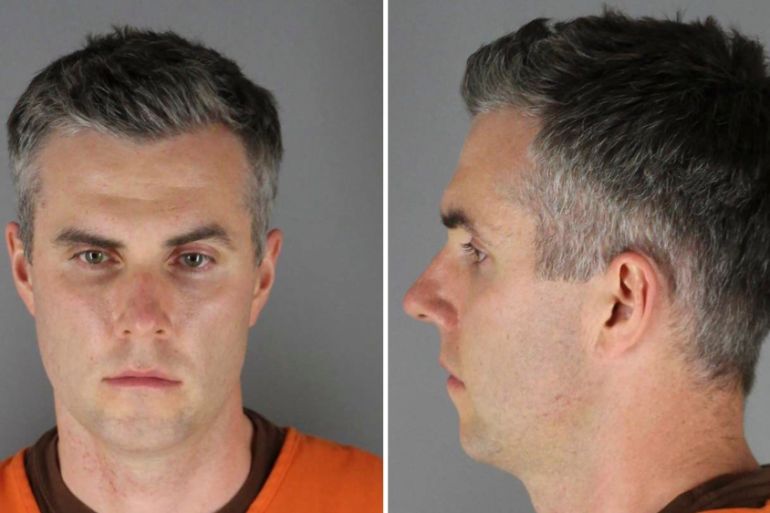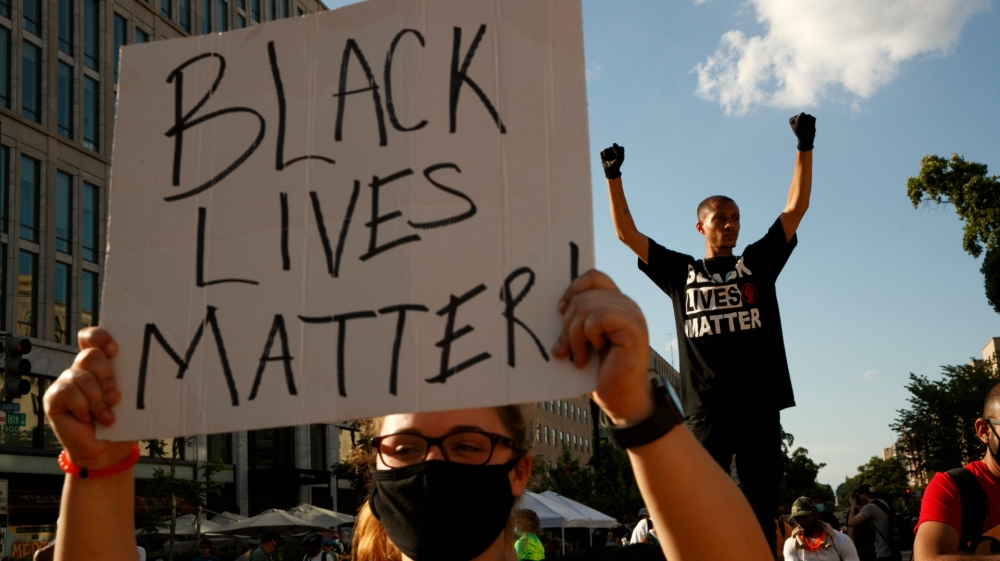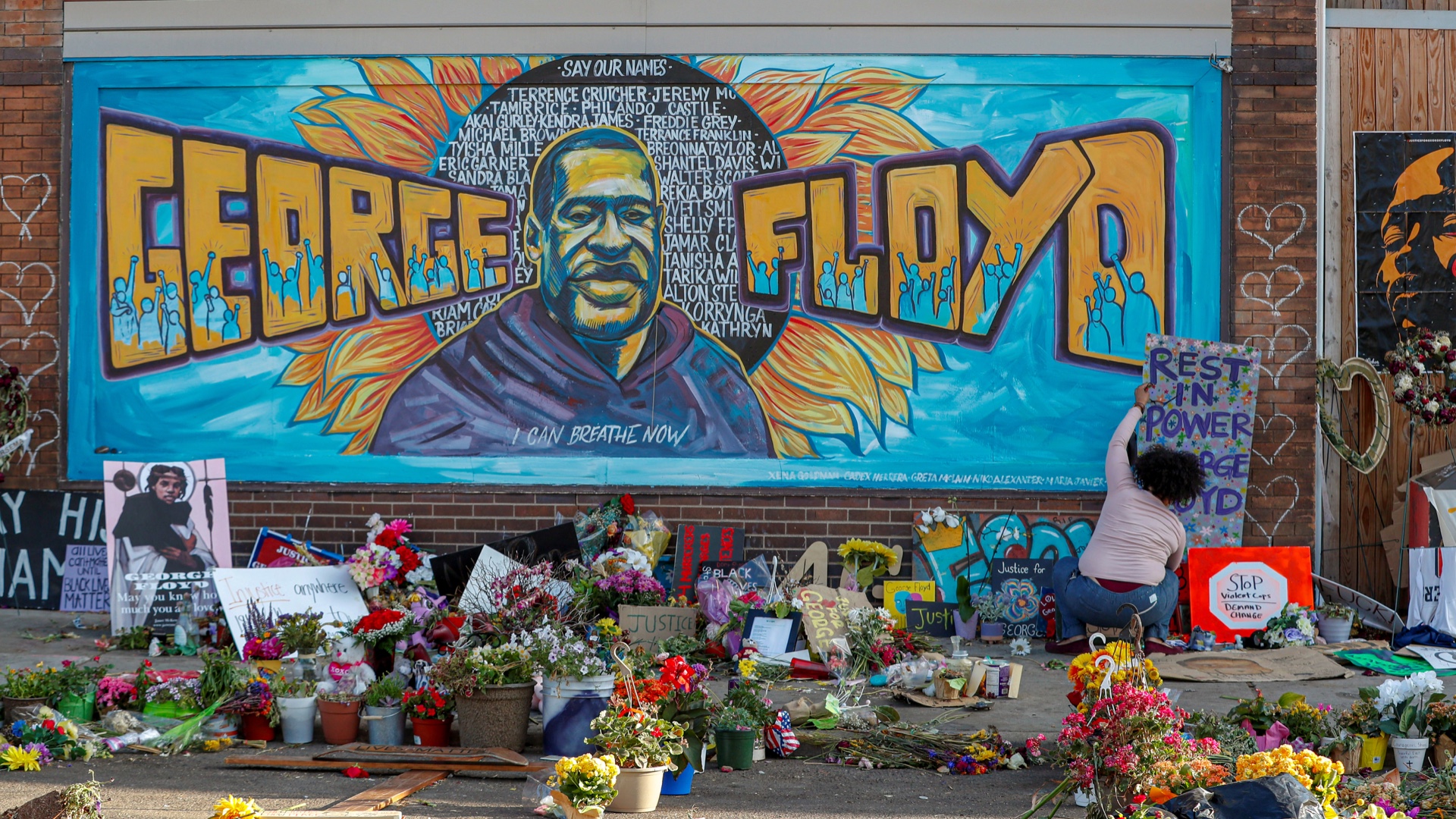Officer’s lawyer seeks dismissal of George Floyd murder charges
Defence lawyer for Minneapolis police officer accused of aiding and abetting Floyd’s murder seeks dismissal of US case.

A lawyer for one of four Minneapolis police officers charged in the death of George Floyd is asking to have his client’s case dismissed, saying there is not probable cause to charge him based on all of the evidence in the United States case and the law.
In court filings (PDF) made public on Wednesday, Thomas Lane’s lawyer, Earl Gray, painted an image of a rookie officer who trusted his senior officer after Floyd had been acting erratically, struggling and hurting himself. Gray said Lane had asked twice if officers should roll Floyd on his side, and the senior officer – Derek Chauvin – said no.
Keep reading
list of 4 itemsHow US police are co-opting a law meant to protect victims of crime
Former US police officer sentenced in killing of Black man Elijah McClain
US paramedics found guilty in 2019 death of Black man Elijah McClain
As part of his court filing, Gray filed transcripts from body camera footage recorded by Lane’s camera and the camera of his partner, J Alexander Kueng, as well as a transcript of Lane’s interview with state investigators. Gray wrote that all of the evidence exonerates his client and that it is not “fair or reasonable” for Lane to stand trial.

Floyd, a Black man, died May 25 after Chauvin, a white officer, pressed his knee into Floyd’s neck for nearly nine minutes and held it there even after Floyd said he couldn’t breathe and stopped moving.
Chauvin is charged with second-degree murder, third-degree murder and manslaughter. Lane, Kueng and Tou Thao are charged with aiding and abetting both second-degree murder and manslaughter. Lane was holding Floyd’s legs at the time, Kueng was at Floyd’s midsection and Thao was watching nearby bystanders. All four officers were fired.
Gray said in his court filing (PDF) that his client’s body camera video shows a complete view of how the encounter with Floyd went from the time Lane got on the scene to the point where Floyd was put into an ambulance; Lane went in the ambulance and helped with CPR.
Gray said that from the start, Lane demanded to see Floyd’s hands at least 10 times while Floyd was in his car, and Lane told investigators he drew his gun because Floyd was reaching for something, but then holstered it once Floyd showed his hands. Gray said Floyd was acting erratically and had foam at his mouth.

Lane and Kueng struggled to get Floyd into the squad car, and Floyd told the officers “I can’t breathe” and “I want to lay on the ground”.
Gray wrote that Floyd started to thrash back and forth and was “hitting his face on the glass in the squad and began to bleed from his mouth”. Officers brought Floyd to the ground and, “The plan was to restrain him so he couldn’t move and hurt himself anymore,” Gray wrote.
As Floyd yelled out, Lane told the other officers “he’s got to be on something” and he asked twice whether officers should roll Floyd onto his side, and Chauvin said no.
“Lane had no basis to believe Chauvin was wrong in making that decision,” Gray wrote.
Lane told state investigators that Chauvin was not Lane’s field training officer, but he was an officer that Lane had previously gone to for guidance.
|
|
Gray also argued that in order to charge Lane with aiding and abetting, prosecutors must show Lane played a knowing role in committing a crime. He said there’s no evidence Lane played an intentional role or knew Chauvin was committing a crime.
“The decision to restrain Floyd was reasonably justified,” Gray wrote, adding: “Based on Floyd’s actions up to this point, the officers had no idea what he would do next – hurt himself, hurt the officers, flee, or anything else, but he was not cooperating.”
Gray wrote that Lane’s trust in Chauvin was “reasonable and not criminal”.